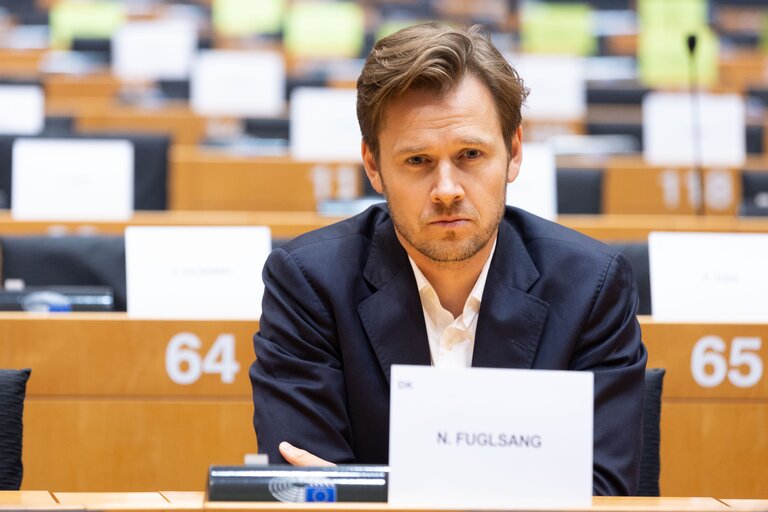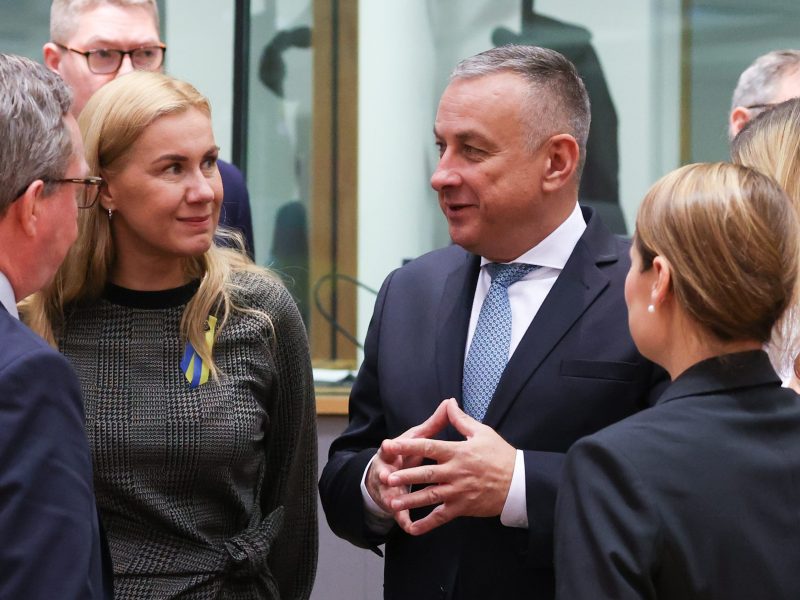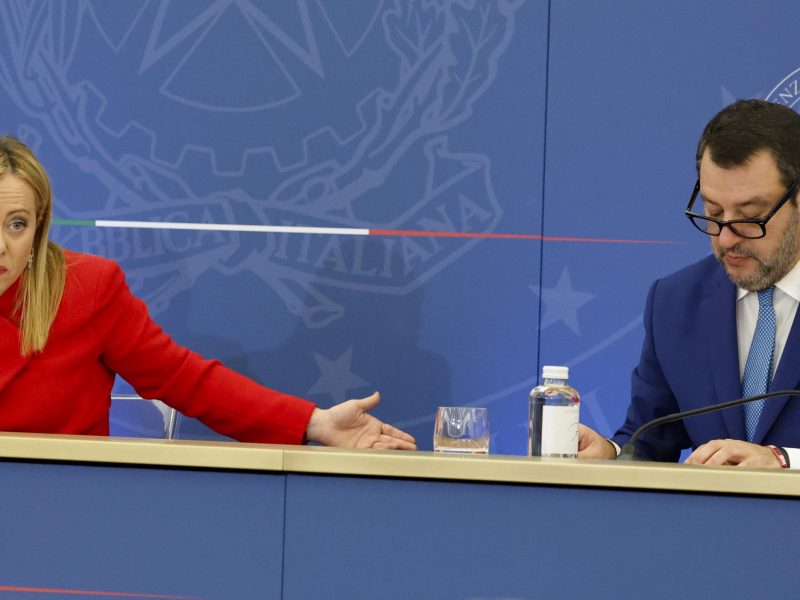
The European Commission led by Ursula von der Leyen started its mandate on the good foot when it comes to energy efficiency policies. It must now think about its legacy and hold firm on the Energy Performance of Buildings Directive (EPBD), which is coming under attack from Eurosceptics in Italy and elsewhere, says Monica Frassoni.
Monica Frassoni is the president of the European Alliance to Save Energy (EU-ASE), a business-led alliance promoting the role of energy efficiency across the whole EU energy system. In 2002-2009, she was the co-president of the Green/EFA Group in the European Parliament.
She spoke to EURACTIV ahead of the second edition of the European Energy Efficiency Day, taking place on 12 October in Brussels.
INTERVIEW HIGHLIGHTS:
- The revised Energy Efficiency Directive (EED) and measures adopted during the gas crisis to lower energy prices are “a clear improvement from the past”.
- Yet, it is “not enough” because the emphasis in Europe remains on supply-side policies instead of how to reduce energy needs.
- Legal loopholes were also added to the EED, allowing continued subsidies for fossil fuel boilers as well as new investments in gas infrastructure.
- Now that the EU Commission is approaching the end of its mandate, it must make a final push on the Energy Performance of Buildings Directive (EPBD), which is coming under attack from countries like Italy and Germany.
- “At this point, critics of the EPBD just need to read the proposal,” which has been amended to alleviate concerns about the costs of renovation for homeowners.
////
Ms. Frassoni, you’ve been working on energy efficiency policies for many years now, including during your time as an MEP. What is your assessment of the EU’s achievements so far under the von der Leyen Commission? Has Europe taken a leap forward on energy efficiency or just baby steps?
Energy efficiency policies received more attention under the von der Leyen Commission, with higher targets for energy savings adopted in the Energy Efficiency Directive, which is certainly an improvement compared to the past.
Is this enough? No. Even during the last energy crisis, emphasis remained on energy supply policies instead of how to reduce energy needs.
Moreover, the EU policy context has been highly unstable. Since legislation is often not clear or ambitious enough, policymakers are obliged to update it every few years – most of the positive steps that were achieved now were among our requests back in 2012 and again in 2018.
All of this is a waste of time, which also generates legal uncertainty.
Even before the Paris Agreement, we knew that we had to step up efforts to reduce our energy needs and optimise our energy consumption. And we need regulatory stability to accelerate long-term investments in energy efficiency, which is indispensable if we are to meet the EU’s 2050 climate neutrality target.
So, you’re saying the focus should now be on implementation?
The focus should be on implementation, which will have to compensate for insufficient legislation. But we are still missing a big chunk, the Energy Performance of Buildings Directive (EPBD) currently in trilogue procedure.
Unfortunately, the EPBD became the focus of intense political controversy in some countries and we are not sure of the result now. Still, About 70-80% of buildings are completely inefficient, energy poverty is everywhere, with huge environmental costs. With the EPBD, we’re talking about substantially reducing energy needs and consumption in buildings, which represent 36% of the EU’s total carbon emissions and 40% of energy use.
Similarly, the Energy Efficiency First principle, which has been formally adopted in the Energy Efficiency Directive , is not implemented. The threshold for its application laid down in the directive is so high that it risks remaining a guiding principle for now.
So the energy efficiency first principle vanished, in a way?
It didn’t because for the first time, it is specifically mentioned in the Energy Efficiency Directive. But of course, the implementation at the member states level remains a challenge, as well as the capacity and willingness of the European Commission to have it respected.
Energy prices went through the roof last year because of the Ukraine war, and the gas crisis that came with it. High energy prices always hurt, but they also come with a silver lining – they act as an incentive to save energy. Has Europe seized the opportunity to promote energy savings?
The REPowerEU plan that was adopted in the wake of the Ukraine war was extremely important because it proposed to introduce a higher target for energy efficiency than initially foreseen by the European Commission in the EED.
Unfortunately, though, it is still very much supply-side oriented. And to make things worse, it opened the way for some new investments in gas infrastructure which did not initially qualify to get support from the NextGenerationEU fund adopted in the wake of the Coronavirus crisis.
Also, if you look at the EU’s Net-Zero Industry Act, there is no sufficient mention of energy efficiency, which is a sign of shortsightedness on behalf of the European Commission and EU Member states.
That said, even if the final result in the Energy Efficiency Directive is not exactly what we wanted, the target is still higher than the initial proposal and is at least partially binding.
Also, the energy crisis demonstrated that it is feasible to reduce energy needs without much disruption and that price is key to motivating all of us to reduce energy consumption. The European Commission’s initiative to reduce gas demand by 15%, was overmatched by basically all Member States. And in industry, the reduction was much higher, because they did everything to reduce their energy bills.
Ahead of last winter, the EU adopted legislation making it obligatory to reduce electricity use by 5% during peak hours, which was unprecedented at the EU level. I suppose this would have been unthinkable a few years back, right?
Yes, absolutely. Unfortunately, this was required by an extreme situation but it was a turning point in the sense that it showed that cuts in energy consumption are possible. And the cuts could have been even deeper.
Should this measure be made permanent?
It can be made permanent, yes. But you can do other things as well. Rules and regulations are fundamental but it is also very important to focus on the opportunities in terms of business and for citizens that energy savings can bring.
And therefore, allocating public resources in the right way is absolutely key.
To take an example, last year my own country Italy spent €60 billion to help people pay their energy bills. And this is money that is basically lost because you pay the subsidy and then ciao!
These are also fossil fuel subsidies, which contribute to further pollution…
Absolutely. And the same goes for gas boilers subsidies. When governments do this, they are not helping people break their dependency on fossil fuels, they are just assisting them and keeping the system as it is.
This is the biggest missed opportunity of this crisis. In 2022, governments around the world have spent €5 trillion to subsidise fossil fuels, according to the International Monetary Fund (IMF). This is really huge, it’s crazy.
Whereas, if you apply the energy efficiency first principle, you reduce energy needs before even thinking about consumption.
Earlier this year, the EU adopted an updated version of the Energy Efficiency Directive, with a new energy savings target of 11.7% by 2030 that was revised upwards due to the war in Ukraine, from the initially proposed 9%. What is your overall assessment of this updated directive? What are its main strengths and weaknesses?
As I said, the updated directive is a clear improvement from the past, for three main reasons.
First, because the target is higher. Second, because the target related to final energy use is now legally binding, which was not the case before. And third, because the energy efficiency first principle is now written in the directive.
Another positive element is that EU countries now have an obligation to renovate 3% of public buildings every year. This is important because 5-10% of the EU’s energy consumption comes from the public sector and because it forces EU governments to set an example
Similarly, big energy companies now have an obligation to reduce their energy deliveries by an average 1.49% annually over the period up to 2030.
Regrettably, the target on primary energy use is not legally binding. That’s unfortunate, especially because this request came from the Spanish government, which is supposed to be environmentally friendly. But they were convinced that they wouldn’t be able to reach the target.
Another thing we regret is that the directive leaves EU countries with the possibility of incentivising hybrid boilers running partly on fossil gas.
Now, the biggest challenge will be implementation. Since there are no binding targets at the national level, there is a high risk that EU member states will not reach them. And sanctions are very weak.
Another important piece of legislation now in the pipeline is the Energy Performance of Buildings Directive (EPBD). We’ve seen countries like Italy pushing back heavily on this proposal. How do you see negotiations evolving in the European Parliament and the Council?
The fate of the EPBD will very much depend on the media attention it will receive in the coming months and the polarisation of debates in countries like Italy or Germany and in the European Parliament.
It’s disappointing in this context to see the homeowners’ lobby in Italy succeeding in creating a political storm around the EPBD. It’s not only the EPBD by the way: nowadays, Italy is opposed to almost every piece of Green Deal legislation currently on the table.
This is a major problem because Italy may be able to find allies in the Council, such as Poland and Hungary, to block the EPBD. In Germany too the context is becoming negative because of the discussion around the ban on fossil boilers, and homeowners organisations saying the EPBD will lower the value of their properties. So, we are very worried by this negative context.
Criticism of the EPBD has centred mostly on Mandatory Energy Performance Standards (MEPS) mandating EU member states to renovate the 15% least efficient buildings. Countries like Italy say this will force homeowners to renovate even when they are unable to afford it. Is there something in the EPBD to address those fears?
Yes, there are already plenty of derogations that were introduced in the text to address those concerns.
For instance, member states have the possibility to reduce the number of houses that have to be renovated, according to a certain timetable. EU countries also have plenty of room to define what are the worst-performing buildings and therefore reduce the scope of the directive.
There is also a derogation for historic buildings, which is one of the things that Italy was pushing for, citing the number of medieval houses in the country. Ironically, the government is shooting itself in the foot because, in Italy, we have the best expertise in the renovation of historical buildings.
Another derogation has also been included for social housing, and I think it was done intelligently: in case the obligation to renovate social housing leads to a higher rent, the renovation can be postponed, or done in a different way.
So the derogations are already there. And the numbers that have been floated about how much the EPBD will cost are simply no longer valid, they’re fake news. At this point, critics of the EPBD and the media reporting on it just need to read the proposal, that’s all.
Now, that’s not to say renovation won’t cost anything – it will be costly. But we also need to see the benefits that renovation will bring in terms of reduced energy bills, and improved property value.
With renovations, there is always the question of putting the money up front. Even though renovation pays off over time, people have genuine concerns about the affordability of making the investment in the first place. And from the perspective of governments, they might not have the financial capacity to massively subsidise household renovations.
Sure, but this argument cannot be used to kill the whole legislation. And many properties are so incredibly inefficient and uncomfortable that they absolutely require renovations because energy costs are going up.
The EPBD helps to plan such renovations in an orderly way. Plus, there is an incredible amount of money available from the European Investment Bank (EIB), the EU Cohesion Fund, and the Recovery Funds.
Are those funds enough?
They are not enough only by themselves, you also need to leverage private investments and ensure the funds are properly spent.
Take the ‘Superbonus’ scheme in Italy for instance. It was designed so that all political forces could support it, including those who are criticising it today. In the end, the bonus was set at a level which is too high, rich households could also get it, including to renovate second homes, it allowed subsidies for gas boilers, and it went through multiple stops and go which made a total mess of it.
So the quality and the time of implementation of support schemes are key.
Amid all the criticism of the EPBD, what is your counter-narrative?
There are plenty of good reasons to renovate buildings: It reduces our energy bills, it makes our homes more comfortable, and it’s good for the environment.
But one I would like to emphasise is that renovation is also good for business. It’s an opportunity to support local jobs and companies. And we are trying as much as possible to attract media attention to the positive stories.
In Germany, there has been fierce public debate on whether to ban new fossil gas boilers. Should the EU step in and decide on a ban on the installation of new fossil boilers?
Well, the EU has started to think about this. In the Energy Efficiency Directive, there is already a limitation to count energy savings coming from more efficient fossil fuel boilers to fulfil the energy-saving obligations set by Article 8. Yet, the EU introduced a loophole to allow counting savings from hybrid boilers, which use also fossil gas.
And this is a big loophole. If you install a hybrid gas boiler now, you will be stuck with it for the next 20 years at least.
This is why we think there should be a ban, like was decided for the automotive sector for the internal combustion engine. But you need to do it in an orderly way, with clear dates, in order to allow everybody to adapt, including poor households who need incentives to do that.
To conclude, if there was one thing that this Commission and Parliament could still do, in your view, to make this mandate worthwhile for energy efficiency, what would it be?
This Commission started on the good foot with the launch of the Renovation Wave and the New European Bauhaus. It must now think about its legacy and avoid simply giving up on the EPBD. That’s the one thing I would insist on.
[Edited by Zoran Radosavljevic]










